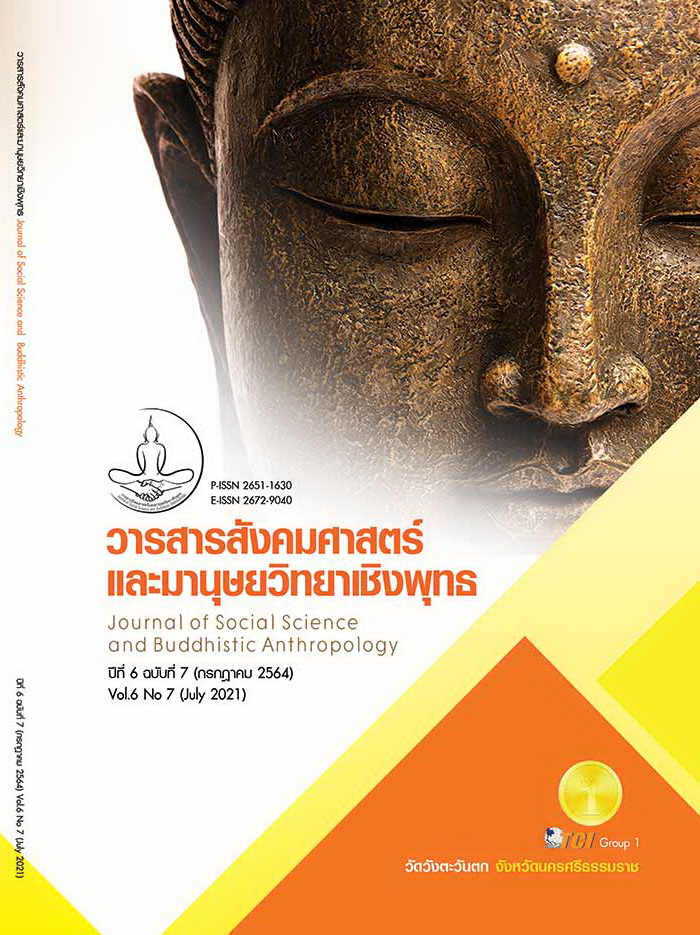AN EXTENSION SYSTEM DEVELOPMENT OF SUGARCANE PRODUCTION FOR SUGAR EQUILIBRIUM SYPPLY AND DEMAND OF THAILAND
Keywords:
Equilibrium Supply and Demand, Sugarcane and Sugar Production, Sugarcane Farmer Extension, ThailandAbstract
The objectives of this research were to 1) analyze an equilibrium supply and demand of sugar at international level and domestic level Thailand, 2) analyze an equilibrium supply and demand of sugarcane production for sugar in Thailand, and 3) develop an extension system for farmers to meet an equilibrium supply and demand of sugarcane and sugar production. The mixed research method was applied with 3 steps according to the objectives. The equilibrium supply and demand of sugar were determined by using secondary data and analyzed by regression model and time series. An extension system development for farmers was divided into two stages, which included an interview of 3 prototype sugar factories which had successful extension method and survey of 14 factories. In-depth and questionnaires were applied to collect data from factory executive and extension personnel of the factory, sugarcane farmer institute committees, and contacted farmers of each factory. The qualitative data were summarized and quantitative data were analyzed by using descriptive statistics. The research results showed that 1) the world sugar export related to world sugar production and consumption, which sugar export of Thailand related to domestic sugar production and domestic consumption. 2) Sugar production of Thailand related to sugarcane production area, yield (ton per hectare), and commercial cane sugar index. Furthermore, sugarcane production efficiency was related to annual rainfall. The optimum sugarcane quantity for equilibrium supply and demand of sugar of Thailand and sustainable occupation for farmers, there should be an average of 98.173 million tons annually. 3) The extension system for farmers to meet the expected sugarcane production should have the collaboration for development and learning by organizing the farmer group and carried out an extension activity through the group. The sugarcane production to support the sugarcane farmers should be incorporation government agencies, factories and farmer institutes. The average demand of sugarcane farmers on sugarcane production extension systems from factories, government agencies and sugarcane farmer institutes was 4.29, 4.18 and 3.69, respectively.
References
กรมส่งเสริมการเกษตร. (2560). เอกสารประกอบการฝึกอบรมกระบวนการโรงเรียนเกษตรกร คณะทำงานผลิตบทเรียนออนไลน์เพื่อพัฒนาบุคลากรกรมส่งเสริมการเกษตร สำนักงานส่งเสริมและพัฒนาการเกษตรที่ 2 จังหวัดราชบุรี. เรียกใช้เมื่อ 15 มีนาคม 2563 จาก http://www.ppsf.doae.go.th/web_km/
ขนิษฐา จิตชินะกุล. (2557). หลักการสื่อสาร. (พิมพ์ครั้งที่ 1). กรุงเทพมหานคร: สำนักพิมพ์โอเดียนสโตร์.
วิรมณ ปรางทอง. (2555). ปัจจัยที่มีผลต่อการตัดสินใจปลูกอ้อยโรงงานของเกษตรกรในอำเภอศรีสัชนาลัย จังหวัดสุโขทัย. ใน วิทยานิพนธ์ส่งเสริมและพัฒนาการเกษตรมหาบัณฑิต สาขาเกษตรศาสตร์และสหกรณ์. มหาวิทยาลัยสุโขทัยธรรมาธิราช.
สมศักดิ์ จันทรรวงทอง. (2559). ทิศทางอุตสาหกรรมอ้อยและน้ำตาลทรายของไทย : รายงานประจำปี 2559 สำนักงานคณะกรรมการอ้อยและน้ำตาลทราย กระทรวงอุตสาหกรรม. กรุงเทพมหานคร: เท็กซ์ แอนด์ เจอร์นัล พับลิเคชั่น จำกัด.
สำนักงานคณะกรรมการอ้อยและน้ำตาลทราย. (2561). รายงานการผลิตอ้อย ปีการผลิต 2560/2561. เรียกใช้เมื่อ 5 มิถุนายน 2561 จาก http://www.ocsb.go.th
สำนักงานคณะกรรมการอ้อยและน้ำตาลทราย. (2562). รายงานประจำปี 2562 สำนักงานคณะกรรมการอ้อยและน้ำตาลทราย กระทรวงอุตสาหกรรม. เรียกใช้เมื่อ 20 มิถุนายน 2563 จาก http://www.ocsb.go.th
สำนักงานเศรษฐกิจการเกษตร. (2560). การนำเข้า - ส่งออกน้ำตาล. เรียกใช้เมื่อ 10 ธันวาคม 2560 จาก http://www.oae.go.th
Bloom, B. et al. (1956). Taxonomy of educational objectives: The classification of educational goals. Handbook I : Cognitive domain. Retrieved December 10, 2017, from https://sites.google.com
Griffiths, D. E. (1959). Administrative theory. New York, N.Y. : Appleton-Century Crofts.
International Sugar Organization (ISO). (2019). Cane and Sugar Situations. Retrieved September 30, 2019, from https:// Isosugar.org
Kidd, J. R. . (1973). How Adults Learn. New York: Association Press. Lawler.
Lovell, R. B. . (1980). Adult learning. New York: Wiley & Sons, Inc.
MCDAVID, J. W. & HARARI, H. (1968). Social psychology; individuals, groups, societies. New York: Harper & Row.
Organization for Economic Co-operation and Development. (2019). Agriculture and Fisheries. Retrieved September 30, 2019, from http://www.occd.org
Worldometer. (2020). World Population (2020 and historical). Retrieved October 18, 2020, from https://www.worldometers.info








